-
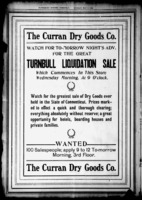
https://chroniclingamerica.loc.gov/data/batches/ct_locust_ver01/data/sn93053726/00271763372/1905050101/0013.pdf
-
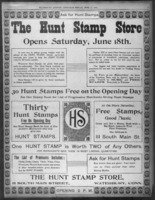
https://chroniclingamerica.loc.gov/data/batches/ct_ironwood_ver01/data/sn93053726/00271763335/1904061701/0680.pdf (Page 7), 6/17/1904
-

Foster, Jack. The horse-mounted unit of the Michigan National Guard assembles in Agassiz Park in Calumet during the 1913-14 Strike. Photograph. Jack Foster Collection. Keweenaw NHP Archives.
-
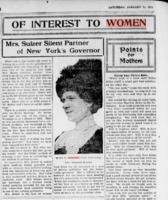
The Calumet news. [volume] (Calumet, Mich.), 31 Jan. 1913. Chronicling America: Historic American Newspapers. Lib. of Congress.
-

The Calumet News (Calumet, MI). "The Calumet News." March 12, 1912, 4.
-

The Calumet News (Calumet, MI). "No, Father! Gratitude Has No Cash Value." Advertisement. July 4, 1914, 7.
-
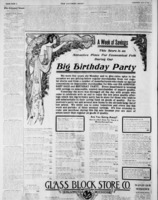
The Calumet News (Calumet, MI). "Big Birthday Party." Advertisement. July 17, 1912, 4.
-
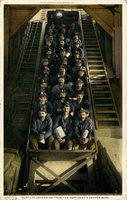
1911. Photograph. M/Localities-Calumet. Burton Historical Collection. Detroit Publishing Company, Detroit, MI.
-

1879. Photograph. NPS Photo.
-

Foreign Information on World War I
https://chroniclingamerica.loc.gov/lccn/sn86081330/1914-10-26/ed-1/seq-1/ page 1
-
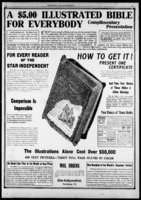
Advertisement
https://chroniclingamerica.loc.gov/lccn/sn86081330/1914-10-29/ed-1/seq-9/#date1=1789&index=4&rows=20&words=INDEPENDENT+STAR+STAR-INDEPENDENT&searchType=basic&sequence=0&state=&date2=1963&proxtext=the+star+independent&y=0&x=0&dateFilterType=yearRange&page=1 page 9
-
'States Have Rights' article provides a clear explanation of The Oxford Democrat's political stance.
-
In the bottom left corner of this page there is a section reporting on news from outside of Oxford County.
-
The Oxford Democrat including a large section on farming and gardening tips for the readers that were written in by people all across the county.
-
Community Bulletin across the county; communication to hundreds of people without mass mailing.
-
Spring Suit advertisement in the margins. Example of catalog ordering.
-
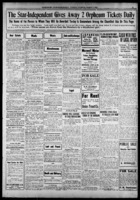
Advertisements https://chroniclingamerica.loc.gov/lccn/sn86081330/1915-03-02/ed-1/seq-11/
-
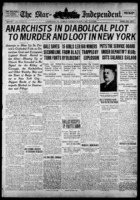
https://chroniclingamerica.loc.gov/lccn/sn86081330/1915-03-02/ed-1/seq-1/#date1=1789&index=16&rows=20&words=&searchType=basic&sequence=0&state=Pennsylvania&date2=1963&proxtext=&y=21&x=11&dateFilterType=yearRange&page=1
-
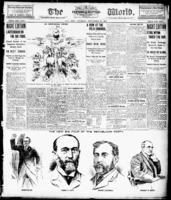
A political cartoon depicting U.S Senator Orville H. Platt riding towards the White House with politicians (Warner M. and Lauterbach) trying to get him to choose between Liberal Sunday Law (liberal law) and Strict Sunday Law (conservative law). The political cartoon represents the uncertainty that Democrats feel about Platt because the illustrator believes Platt is going through in order to please voters. Because Platt was a prominent Republican figure in the 1890s, this political cartoon represents how he would ignore his political duties to listen to the opinions of others (rich businessmen).
https://chroniclingamerica.loc.gov/lccn/sn83030193/1895-09-28/ed-1/seq-1/
Page 1
-

A political cartoon portraying William Lafayette Strong preparing to attack an ex-boss. The political cartoon portrays Strong as a brute who will mercilessly chop off the head of the ex-boss while the ex-boss is cowering on his knees in fear. The illustration takes an orientalist (particularly, Arabian) theme as Strong and the ex-boss are represented in Arab clothing, the architecture of the building they are in takes from Arabic designs, and the sword that Strong holds resembles that in which characters from the Arabian Nights story would carry. While the political cartoon can be described as representing Arabic culture in a degrading manner, the political symbolism within the illustration represents Strong as greedy (the reason why could be due to his association with the Republican party).
https://chroniclingamerica.loc.gov/lccn/sn83030193/1895-05-03/ed-1/seq-3/
Page 3
-
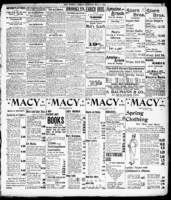
An advertisement for men’s coats, vests, and suits. In the advertisement, an illustration of a man wearing a suit and tophat is presented. The illustration of the man represents how masculinity (appearing fashionable) was portrayed in American society as the man was sketched to appear formal and dignified to persuade consumers to purchase clothing from Macy’s.
-
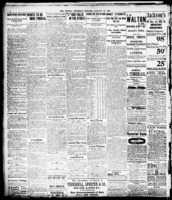
An article describing how E.H Hubbell (the Commissioner of Education for the state of New York) accused Susan Balter of selling cigarettes to Charles McGovern and John Keheler (both were twelve-year-old boys). This article demonstrates how citizens focused on moralizing youth (by preventing them from smoking cigarettes) and how the New York Board of Education dealt with affairs.
-
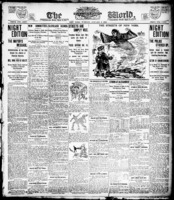
A political cartoon representing the filth of New York through exaggerated illustration. In the political cartoon, a man walks the streets of New York where the streets are filled with fog and death (represented by the Grim Reaper and the fog surrounding him). The man could be viewed as someone who is not a New Yorker and is touring the city. The political cartoon symbolizes the illustrator’s opinion that the streets of New York were dirty and needed to be cleaned.
-
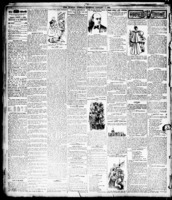
A letter (in the form of a poem) by S.T.A. to The Trinity Corporation advocating to remove the “single tax”. S.T.A. notes that the “single tax” promotes “injustice” and “discourages landlordism,”. His letter demonstrates how citizens used newspapers such as the New York World to speak their opinions about economic concerns.
https://chroniclingamerica.loc.gov/lccn/sn83030193/1895-01-01/ed-1/seq-4/
Page 4
-

An article written by James Creelman that describes the United States’ role in its policies with Japan and how it is dealing with the Sino-Japanese War. He notes that President Grover Cleveland’s peace treaty would not be accepted by the Japanese government, what would happen to China and Port Arthur after the war ended (presuming Japan won), and the loans Japan would have to pay off war debt. Creelman takes an American perspective on the Sino-Japanese War and briefly discusses the perspectives of the Japanese, British, and Russians as well. Notably, he does not describe the Chinese perspective on the war.
https://chroniclingamerica.loc.gov/lccn/sn83030193/1894-12-22/ed-1/seq-3/
Page 3




















